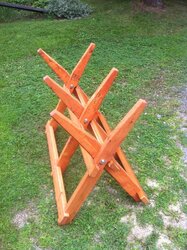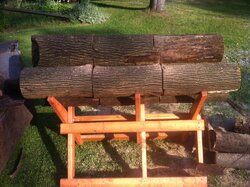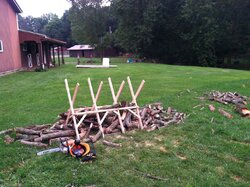I am sure it has been covered ad nauseum but can't find something like The Complete Moron's Guide to Putting One Log on top of Another.
What to encourange, what to avoid, common mistakes, and the sure guide to cozy warmth?
I'm new to this whole thing. I have some new stuff cut down this year but it had been standing dead for a couple years before that at our new place. Emerald Ash Borers decided what we should cut down. Some was standing in a shadier area and one in an open field so it seems very dry.
Thoughts and guidance? Thanks!
What to encourange, what to avoid, common mistakes, and the sure guide to cozy warmth?
I'm new to this whole thing. I have some new stuff cut down this year but it had been standing dead for a couple years before that at our new place. Emerald Ash Borers decided what we should cut down. Some was standing in a shadier area and one in an open field so it seems very dry.
Thoughts and guidance? Thanks!


 . It's a lot of labor, so having a couple tools never hurts. I don't know what I'd do without my log tongs. I just built myself a sawbuck as well; not sure why I waited so long.
. It's a lot of labor, so having a couple tools never hurts. I don't know what I'd do without my log tongs. I just built myself a sawbuck as well; not sure why I waited so long.





